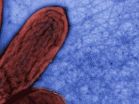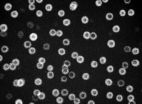(Press-News.org) WASHINGTON, D.C. – The path of success for Nobel Prize laureates in the sciences isn't a straight shot from obscurity to never-ending scientific superstardom, a new study reveals.
Instead, many laureates see their Nobel-winning idea grow in acceptance from their first related scientific article to their most successful publication. But their later work related to the Nobel idea gains less acceptance, and many times is no more accepted by the scientific community than their very first efforts.
"In many cases, we found that Nobel laureates' final publication on their idea that won the Prize was lowest in our measures of acceptance," said Christine Charyton, who led the study as a visiting assistant professor and lecturer in psychology at Ohio State University.
"While their work is still successful, laureates find their later work doesn't get the same level of attention and acceptance as their earlier work." Charyton said.
However, there are exceptions, and the path to idea acceptance differs for laureates in physics when compared to those in chemistry and medicine, the researchers found.
In conducting the study, Charyton mentored Samantha DeDios, who did the work for her senior honors thesis at Ohio State. Thomas Nygren, professor of psychology at Ohio State, also advised DeDios on the research.
They presented their work during a session on scientific approaches to creativity Aug. 6 at the annual convention of the American Psychological Association in Washington, D.C.
The purpose of the study was to find out how creative ideas in the sciences become accepted in their fields, said Charyton, who teaches the psychology of creativity at Ohio State.
"Even Nobel Prize-winning ideas take a long time to get accepted and the acceptance does not remain stable," Charyton said.
The study involved 204 Nobel laureates from 1980 to 2009 in physics, chemistry and medicine. In order to evaluate the acceptance of the laureates' prize-winning ideas, the researchers measured the effect of the articles that the laureates published in scientific journals. Journal articles are the major way in which scientific findings are disseminated.
By measuring how much of an influence these articles had within their scientific disciplines, the researchers could determine how much they had been accepted.
The researchers used several different measures regarding the effect of research publications. For example, one measure was how many times the article was cited by other scientists in their publications. This reflects how well-known a particular publication is among the scientific community.
Another measure was the "impact factor" of the journals that published the laureates' articles. This is a statistical formula that measures the importance or influence of a particular journal at a particular time.
The researchers looked at three key publications in the laureates' careers: the first publication concerning the idea that won them a Nobel Prize; the highest-cited publication concerning their Nobel idea; and the last publication concerning their Nobel idea.
Using several publicly available databases, including the ISI Web of Science and Journal Citation Reports, the researchers were able to see how these three publications of each laureate fared on the measurements.
Overall, the findings showed that, on many measures, Nobel laureates' most highly cited publication was indeed more accepted than their first publication.
Surprisingly, though, the Nobel laureates' first publication was almost always more accepted than their final publication involving the Nobel-winning idea, except for physicists. That suggests the glow of scientific acceptance that occurs after winning a Nobel Prize doesn't always extend to their later career.
The researchers don't know for sure why the last paper was less accepted than the first, but there are several possible reasons.
For one, the more prestigious journals may not want to publish more articles on the Nobel winning idea, figuring the new work is too related to what has already been published. Another possibility is that their last paper may have diverged too much from their original prize-winning idea.
"If the last paper diverges enough from the original idea, it may be seen as a novel idea again, and it will take some time to become accepted," DeDios said.
But the researchers cautioned that these are just possibilities, and more work is needed to determine why the final paper gets less acceptance.
They did find some differences in the path to acceptance in the three fields studied. In general, the impact factor measure showed that the physics laureates' publications were in less prestigious journals compared to those in medicine and chemistry, suggesting that the physics domain is more specialized and less accessible to the public. That may reflect differences in the scientific culture of physics compared to those in medicine and chemistry. For example, in recent years scientific journals have become less important in physics because more researchers are publishing online rather than in traditional journals.
The researchers did find that the first Nobel publication of physics laureates had a lower impact than their last Nobel-idea publication, which was opposite from those in chemistry and medicine.
Still, Nygren said he was struck by the similarities in the path to scientific acceptance taken by laureates in all three fields.
"It would be interesting to apply these tests in other fields, such as economics, but based on these findings I would suspect we would find very similar results," Nygren said.
###
Contact: Christine Charyton, Charyton.1@osu.edu
Thomas Nygren, (614) 292-3038; Nygren.1@osu.edu
Written by Jeff Grabmeier, (614) 292-8457; Grabmeier.1@osu.edu
Even science Nobel Laureates find acceptance isn't a given, study finds
2011-08-09
ELSE PRESS RELEASES FROM THIS DATE:
Common irregular heartbeat raises risk of dementia
2011-08-09
SEATTLE, WA—The most common kind of chronically irregular heartbeat, known as atrial fibrillation, is associated with a greater risk of dementia, including Alzheimer's disease. This discovery by scientists at Group Health Research Institute and their collaborators was published online in advance of print on August 1 in the Journal of the American Geriatrics Society.
"Both atrial fibrillation and dementia increase with age," said Sascha Dublin, MD, PhD, a Group Health Research Institute assistant investigator who led the research. "Before our prospective cohort study, ...
Bullying may contribute to lower test scores
2011-08-09
WASHINGTON — High schools in Virginia where students reported a high rate of bullying had significantly lower scores on standardized tests that students must pass to graduate, according to research presented at the 119th Annual Convention of the American Psychological Association.
"Our study suggests that a bullying climate may play an important role in student test performance," said Dewey Cornell, PhD, a clinical psychologist and professor of education at the University of Virginia. "This research underscores the importance of treating bullying as a schoolwide problem ...
Mutations not inherited from parents cause more than half the cases of schizophrenia
2011-08-09
Columbia University Medical Center researchers have shown that new, or "de novo," protein-altering mutations—genetic errors that are present in patients but not in their parents—play a role in more than 50 percent of "sporadic" —i.e., not hereditary—cases of schizophrenia. The findings will be published online on August 7, 2011, in Nature Genetics.
A group led by Maria Karayiorgou, MD, and Joseph A. Gogos, MD, PhD, examined the genomes of patients with schizophrenia and their families, as well as healthy control groups. All were from the genetically isolated, European-descent ...
UMass Amherst research team discovers new conducting properties of bacteria-produced wires
2011-08-09
AMHERST, Mass. – The discovery of a fundamental, previously unknown property of microbial nanowires in the bacterium Geobacter sulfurreducens that allows electron transport across long distances could revolutionize nanotechnology and bioelectronics, says a team of physicists and microbiologists at the University of Massachusetts Amherst.
Their findings reported in the Aug. 7 advance online issue of Nature Nanotechnology may one day lead to cheaper, nontoxic nanomaterials for biosensors and solid state electronics that interface with biological systems.
Lead microbiologist ...
ESDS Announces the Launch of eNlight - The Dynamic Cloud Computing Platform
2011-08-09
eNlight - Taking the Cloud Computing Industry by Storm
ESDS is pleased to announce the launch of its eNlight Cloud Computing Platform - the World's first intelligent cloud that truly does justice to the concept of Cloud Computing. eNlight Cloud is an addition to the company's existing portfolio of other software products and managed hosting services and was designed with small to medium sized companies in mind. In the existing Cloud Hosting market most companies offer the option to pay for fixed use. Companies try to market it as flexible hosting by claiming you can ...
HIA-LI Recognizes Finalists for Prestigious 17th Annual Business Achievement Awards
2011-08-09
HIA-LI, the recognized voice for business on Long Island, is pleased to announce the finalists for the prestigious HIA-LI 17th Annual Business Achievement Awards competition. Winners will be announced during a gala luncheon event held at the Crest Hollow Country Club in Woodbury, NY, 11:30 AM - 2:00 PM, Tuesday, September 13, 2011. More information about the awards event is available at: http://bit.ly/hia-li-baa-event-2011.
"HIA-LI is pleased to recognize these finalists who are among the best run and highest performing companies on Long Island for our HIA-LI Business ...
The nanoscale secret to stronger alloys
2011-08-09
Long before they knew they were doing it – as long ago as the Wright Brother's first airplane engine – metallurgists were incorporating nanoparticles in aluminum to make a strong, hard, heat-resistant alloy. The process is called solid-state precipitation, in which, after the melt has been quickly cooled, atoms of alloying metals migrate through a solid matrix and gather themselves in dispersed particles measured in billionths of a meter, only a few-score atoms wide.
Key to the strength of these precipitation-hardened alloys is the size, shape, and uniformity of the ...
New resource to unlock the role of microRNAs
2011-08-09
A new resource to define the roles of microRNAs is announced today in Nature Biotechnology. The resource, called mirKO, gives researchers access to tools to investigate the biological role and significance for human health of these enigmatic genes.
mirKO is a "library" of mutant mouse embryonic stem (ES) cells in which individual, or clustered groups of microRNA genes, have been deleted. Using these tools researchers can create cells or mice lacking specific microRNAs, study expression using fluorescent markers, or inactivate the gene in specific tissues or at specific ...
UNC-Duke ties lead to collaborative finding about cell division & metabolism
2011-08-09
Chapel Hill, NC – Cells are the building blocks of the human body. They are a focus of scientific study, because when things go wrong at the cellular and molecular level the consequences for human health are often significant.
A new finding based on multiple collaborations between UNC and Duke scientists over several years points to new avenues for investigation of cell metabolism that may provide insights into diseases ranging from neurodegenerative disorders like Parkinson's and Alzheimer's disease to certain types of cancers.
The finding, published today in the ...
Brain's map of space falls flat when it comes to altitude
2011-08-09
Animal's brains are only roughly aware of how high-up they are in space, meaning that in terms of altitude the brain's 'map' of space is surprisingly flat, according to new research.
In a study published online today in Nature Neuroscience, scientists studied cells in or near a part of the brain called the hippocampus, which forms the brain's map of space, to see whether they were activated when rats climbed upwards.
The study, supported by the Wellcome Trust, looked at two types of cells known to be involved in the brain's representation of space: grid cells, which ...



